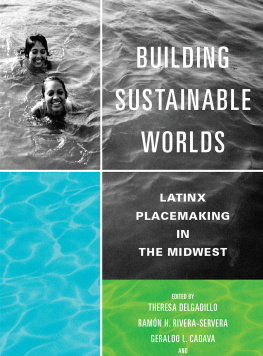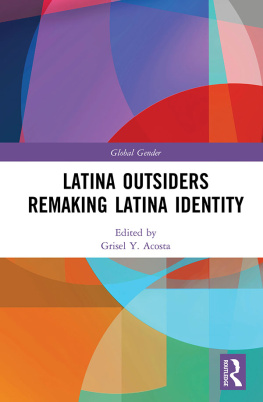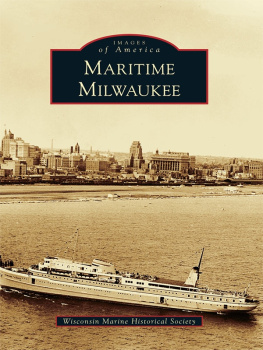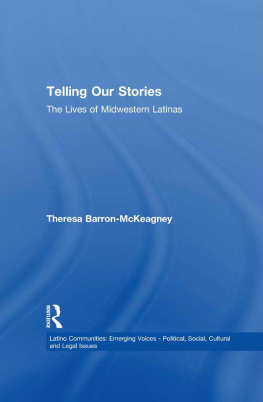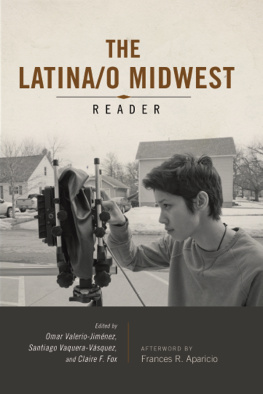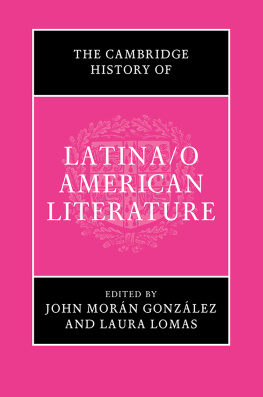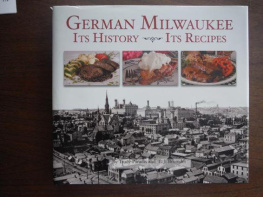Latina Lives in Milwaukee
LATINOS IN CHICAGO AND THE MIDWEST
Series Editors
Frances R. Aparicio, Northwestern University
Pedro Cabn, State University of New York
Juan Mora-Torres, DePaul University
Maria de los Angeles Torres, University of Illinois at Chicago
A list of books in the series appears at the end of this book .
Latina Lives in Milwaukee
THERESA DELGADILLO
featuring interviews with
Ramona Arsiniega
Mara Monreal Cameron
Daisy Cubas
Elvira Sandoval Denk
Rosemary Sandoval Le Moine
Antonia Morales
Carmen Murguia
Gloria Sandoval Rozman
Margarita Sandoval Skare
Olga Valcourt Schwartz
Olivia Villarreal
University of Illinois Press
URBANA, CHICAGO, AND SPRINGFIELD
Support for this research received from The Ohio State
University College of Arts and Sciences Publication
Subvention Grant.
2015 by the Board of Trustees
of the University of Illinois
All rights reserved
Manufactured in the United States of America
1 2 3 4 5 C P 5 4 3 2 1

This book is printed on acid-free paper.
Library of Congress Control Number: 2015950154
ISBN 978-0-252-03982-9 (hardcover)
ISBN 978-0-252-08136-1 (paperback)
ISBN 978-0-252-09793-5 (e-book)
For my mother and my father,
Amalia and Sacramento Delgadillo.
Their love made all the difference.
Contents
Preface
The women who generously gave their time and thoughtfully shared stories from their life journeys in this volume demonstrate not only that achievement can come to people of many different backgrounds and experiences but that there are many forms of achievementpersonal, professional, communallarge and small. The voices, personalities, political views, struggles, and triumphs in these stories reveal a diversity of Latina experience and provide a record of social changes and tensions, and ongoing debates and discussions, within Latina/o communities. These include the state of educational opportunity for Latinas/os, ethnic and racial differences among Latinas/os and between Latinas/os and other groups, limitations on economic opportunity, discrimination, language barriers and prejudices, homophobia, changing religious affinities, immigration reform, political representation, womens continued double workload, and domestic violence. In these life stories, women tackle many of these issues on multiple fronts, often working under limitations yet also contributing to efforts to ensure that all Latinas/os in the United States enjoy full civil rights, educational access, economic opportunity, and rich lives as they participate as global citizens in having a voice in the affairs of the world.
1. Latinas in Milwaukee
Why Milwaukee?
A playbill for the Palace Museum in downtown Milwaukee, open from 1883 to 1897, announces a show featuring Mlle. Vallecita and performing mountain lions as well as the The Mexican Impalement Act at its location on Third Street near Grand Avenue. prompting many Mexicans and Mexican Americans to migrate to the Midwest. This volume adds to our growing understanding of the experiences and histories of Latinas/os in the Midwest by making available a set of oral histories by Latinas in Milwaukee.
The participants in this project represent diverse generations, ethnicities, and occupations as well as varied political and social perspectives and life experiences. The interviewees include women who arrived in Milwaukee as migrants from another region or territory, or immigrants from another country, as well as women born and raised in Milwaukee. These oral histories provide further insight into Milwaukees Latina/o communities in the twentieth century, with particular emphasis on the experiences of women. The women chart their familys or their own arrival in Milwaukee in ways that confirm the existing research on significant migrations from Latin America to the United States and to the Midwest in particular, as well as important research on interregional migrations of Mexican Americans and Puerto Ricans within the United States. The stories of Antonia Morales and Elvira, Gloria, Margarita, and Rosemary Sandoval confirm research on early twentieth-century migrations from Mexico to the United States with their families arrivals in Milwaukee in the 1920s. Mara Monreal Camerons oral history identifies her own familys migration from Mexico to Texas in the 1920s, and then from Texas to Wisconsin in the 1940s. These oral histories strongly suggest that the 1920s is, in fact, the inaugural moment for a Latina/o community in Milwaukee. Olivia Villareals and Ramona Arsiniegas oral histories chart their families emigrations from Mexico to Milwaukee in the 1940s1950s postwar industrial boom that brought recruits and migrants to the Midwest. The migrations of Olga Valcourt Schwartz and Daisy Cubas from Puerto Rico and El Salvador, respectively, occur outside of the main, as both arrived in the 1960s for educationValcourt in Milwaukee and Cubas in New York and eventually Milwaukee. Cubass oral history takes up the period in the 1980s when significant numbers of Salvadorans and other Central Americans migrated to the United States, fleeing war and violence, through the impact on her family and her own antiwar activism. Carmen Murguias oral history offers the perspective of a U.S.-born Latina/o member of a civil-rights-minded family as she tells of her life growing up in Milwaukee. Participants in this project include women in their eighties, seventies, sixties, fifties, and forties. This generational spread among women yields the set of life stories collected here that span much of the twentieth century, from the 1920s through the 1990s, and continue into the beginning of the twenty-first century. In this way, the book offers a textured view of Latina experiences in work, career, business, family, community, philanthropy, advocacy, and activism over the past ninety years.
), which lists multiple presenters and performers.
Research on major migration periods, major ports of arrival, and key areas of settlement for Latinas/os form an important part of piecing together the story of Latinas/os in the Midwest, and so, too, does the exploration of individual and smaller group migrations outside of the major periods, especially since these provide evidence of enduring transnational social and economic networks and continued cross-cultural encounters. Nor should we overlook the interregional circulation and mobility of Latina/o groups and individuals, especially in considering Latina/o populations outside of typical population centers for these groups. For example, we know more about Latinas/os in Chicago than about Latinas/os in any other midwestern city or town, yet we need to know much more about Latina/o life throughout the region. Latina/o experiences and contributions in the Midwest are only beginning to make their way into the larger bodies of knowledge about regional history, literature, and culture.

Figure 1. Flier announcing 1927 Gran Baile in Milwaukee, Wisconsin. Latino/Hispanic American Collection. Milwaukee County Historical Society. MSS-3035. Box 1. Folder 3. Photograph courtesy of the Milwaukee County Historical Society.


 This book is printed on acid-free paper.
This book is printed on acid-free paper.

